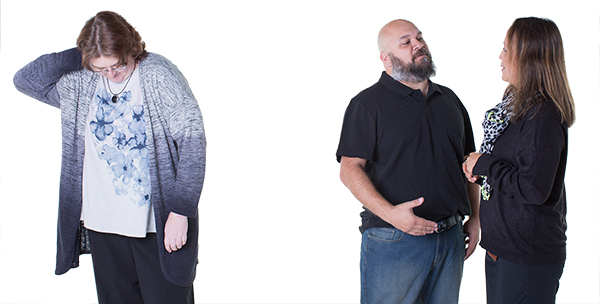
The Australian Bureau of Statistics recently published the 2015 Survey of Disability, Ageing and Carers. The report measures:
- the number of people in Australia who have disability
- the level of support elderly people and people with disabilities need
- the age, living standard, and amount of money elderly people, people with disabilities and their carers have
- the number of people, and the type of people, who are carers for an elderly person or a person with disability.
The report found that in 2015:
- One in five Australians have a disability. That is 4.3 million people and 18.3 per cent of the overall population.
- The rate of disability increases with age. One in seven people of working age (aged 15 -64) that were living in households – not in hospitals, care facilities, nursing homes or group homes – have a disability. This increases to just over half in people aged 64 and over.
The National Disability Strategy Implementation Reference Group (a group of people who advise the government on The National Disability Strategy 2010-2020) made suggestions about changes they wanted made to the survey, including:
- The language used in the survey should be changed. People with disabilities should be described as people with active lives, who can be involved in their community.
- The survey should measure attitudes towards elderly people and people with disabilities. The survey should include questions about whether these groups face discrimination.
As a result of these suggestions a series of questions asking about discrimination and access to the community were added to the 2015 survey. The first lot of data released from the survey about discrimination covers people with disabilities aged 15 and over that were living in 'households'.
The Disability Discrimination Act was created in 1994 to protect people with disability and make sure they are given the same opportunities as those without disability. However, the survey results show that, in 2015, one in 12 people with disability in Australia experienced discrimination because of their disability. It also showed that:
- Men and woman reported similar rates of discrimination.
- Young people with disability were much more likely to report discrimination than older people (20.5 per cent compared to 2.1 per cent).
- Young people were more likely to avoid situations because of their disability than older people.
- 35.1 per cent of all women and 28.1 per cent of all men had avoided a situation because of their disability.
A main focus of The National Disability Strategy is making sure people with disabilities are employed and supported to keep their jobs. This helps with the economy as well as the person’s sense of achievement and mental health. However, the survey found that people with disabilities were significantly less likely to be employed than people without disabilities, and this had not changed much since the last survey in 2012. People with disabilities reported that employers discriminated against them the most. Almost half of full time workers and unemployed people said they had faced discrimination from an employer, while for part-time workers, just over one-third reported discrimination.
While these are disappointing results, the good news is, we all have the power to be more inclusive and accessible. We have to start now!
The Australian Human Rights Commission have put together a resource explaining what discrimination is, the laws around discrimination, and things you can do to make sure you are providing a fair environment, which supports everyone.
Some simple steps people can take to help avoid discrimination include:
- Talking to the person with a disability to find out their needs.
- Put help or services in place to make sure the person has the same chances of being an effective worker as people without a disability.
- Make reasonable adjustments, for example, give the person tasks which play to their strengths.
You can read more about the survey and the results on the Australian Bureau of Statistics website. A second round of data will be released from the survey later in the year.


